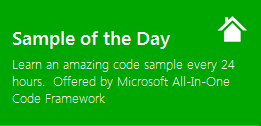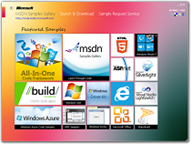[Sample Of August 4] How to delete entity from Windows Azure Table storage in a DropDownList Control
 |
 |
|

Aug.
4
|
 |
|
Sample : https://code.msdn.microsoft.com/How-to-delete-entity-from-4a745cc5
The partition key forms the first part of an entity's primary key. The partition key may be a string value up to 1 KB in size.
You must include the PartitionKey property in every insert, update, and delete operation.
The row key is a unique identifier for an entity within a given partition. Together the PartitionKey and RowKeyuniquely identify every entity within a table.
The row key is a string value that may be up to 1 KB in size.
You must include the RowKey property in every insert, update, and delete operation.
Deleting or retrieving an Azure Table Entity need both partition key and row key.
But if you use ASP.NET, you may not store the entire entity information like WPF. So after you bind the table entities to a data binding control, you may lose its partition key and row key when page is posted back.
So this code snippet will show you how to bind table entity’s data to a dropdown list, and get its partition key and row key when page is posted back.
You can find more code samples that demonstrate the most typical programming scenarios by using Microsoft All-In-One Code Framework Sample Browser or Sample Browser Visual Studio extension. They give you the flexibility to search samples, download samples on demand, manage the downloaded samples in a centralized place, and automatically be notified about sample updates. If it is the first time that you hear about Microsoft All-In-One Code Framework, please watch the introduction video on Microsoft Showcase, or read the introduction on our homepage https://1code.codeplex.com/.
